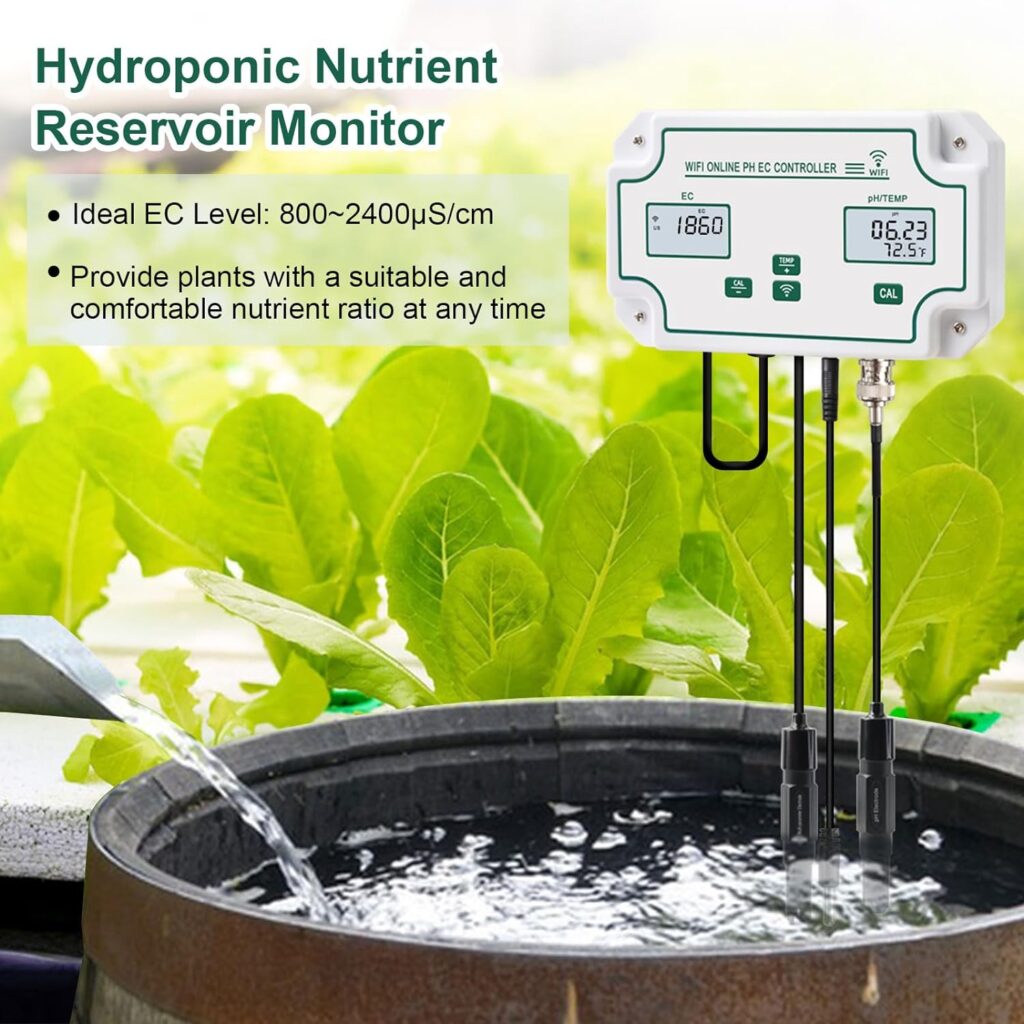Elevating Efficiency: Hydroponic Automation and Monitoring
In the world of hydroponics, harnessing the power of automation and monitoring systems can take your gardening experience to a whole new level. In this guide, we’ll introduce you to essential technologies like timers, pH controllers, and nutrient dosers, and show you how they can enhance the efficiency and productivity of your hydroponic setup.
The Role of Automation in Hydroponics
1. Timers:
Automate lighting schedules, nutrient delivery, and even ventilation systems to ensure your plants receive consistent care, even when you’re not around.
2. pH Controllers:
Maintain precise pH levels in your nutrient solution with automated pH controllers. These devices continuously monitor and adjust pH, preventing fluctuations that can stress your plants.

3. Nutrient Dosing Systems:
Achieve accurate and controlled nutrient delivery with dosing systems. These automated devices dispense nutrients in the correct proportions, ensuring your plants receive the optimal nutrition they need.
Setting Up Hydroponic Automation Systems
1. Timers:
- Choose a reliable timer compatible with your hydroponic system.
- Set specific on/off schedules based on the needs of your plants and the type of lighting you use.
2. pH Controllers:
- Install the pH controller and connect it to your nutrient solution reservoir.
- Calibrate the controller according to the manufacturer’s instructions to ensure accurate pH readings.
3. Nutrient Dosing Systems:
- Select a dosing system that suits the size and complexity of your hydroponic setup.
- Calibrate the system to dispense the correct amount of nutrients at the desired intervals.
Benefits of Hydroponic Automation
1. Consistency and Precision:
Automation ensures that your plants receive the right care at the right time, minimizing stress and optimizing growth.
2. Time and Labor Efficiency:
Automated systems save you time and effort, allowing you to focus on other aspects of your garden.
3. Optimized Nutrient Delivery:
Dosing systems provide accurate nutrient ratios, preventing over or under-feeding of your plants.
Monitoring and Fine-Tuning
1. Regular Checks:
While automation is powerful, it’s important to regularly inspect and maintain your systems to catch any issues early.
2. Calibration and Adjustment:
Calibrate your automation devices periodically to ensure they continue to operate accurately.
3. Data Logging and Analysis:
Consider using monitoring systems with data logging capabilities to track environmental conditions and make informed adjustments.
Conclusion: Mastering Hydroponic Automation
By integrating automation and monitoring systems into your hydroponic setup, you’ll create an environment where your plants can thrive with precision and efficiency. Embrace the power of technology, and watch as your hydroponic garden flourishes like never before.
Nutrient Solutions and pH Management in Hydroponics: A Comprehensive Guide
Choosing the Right Hydroponic Medium: A Guide to Optimal Growth